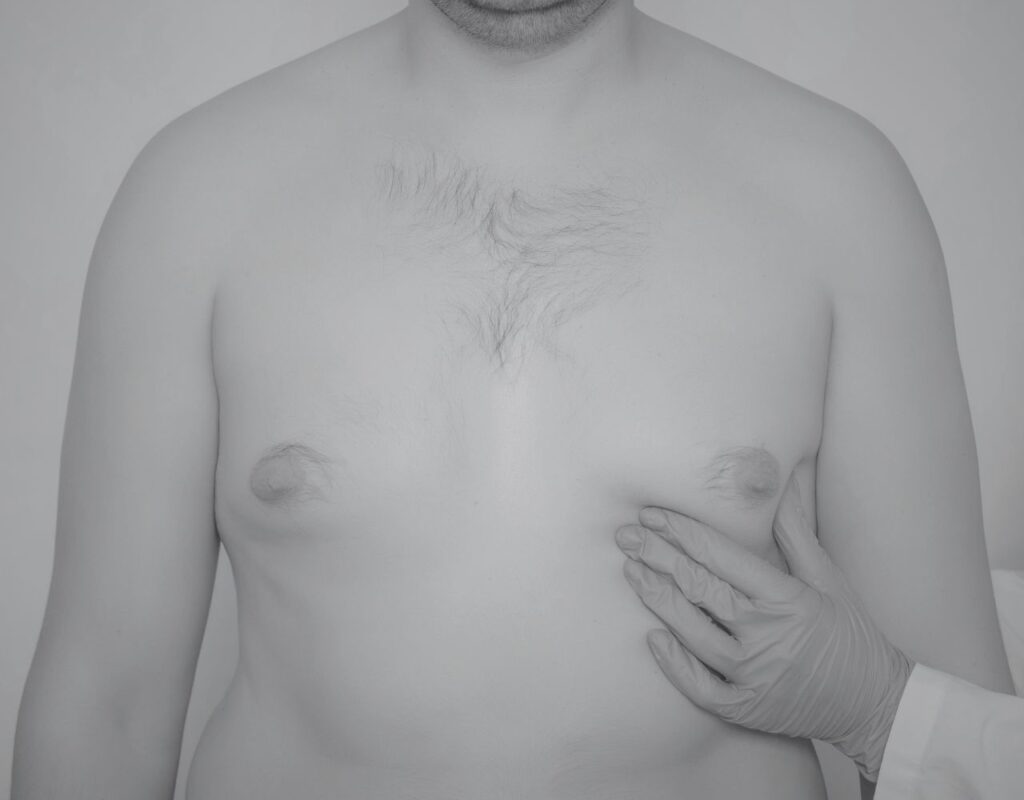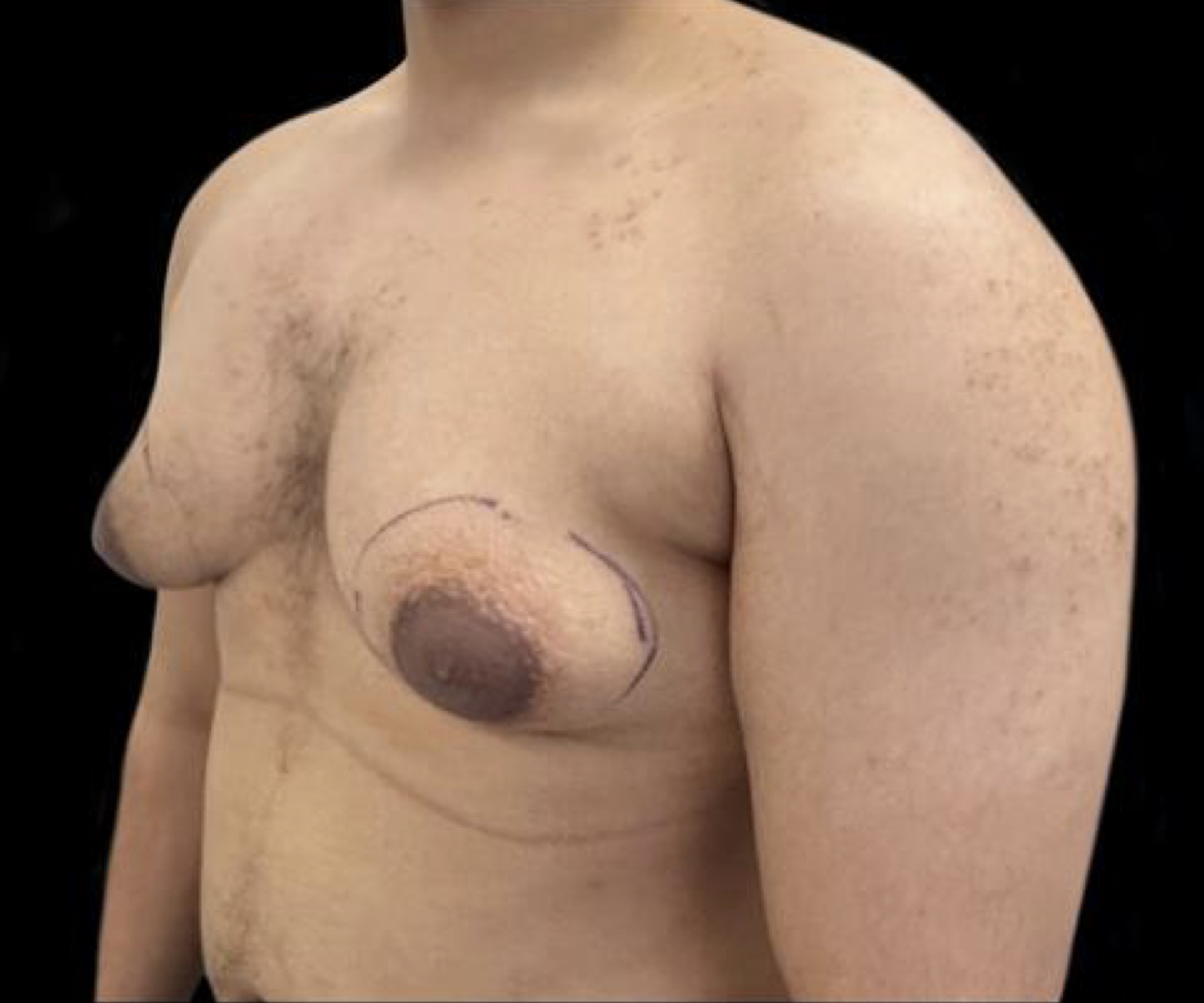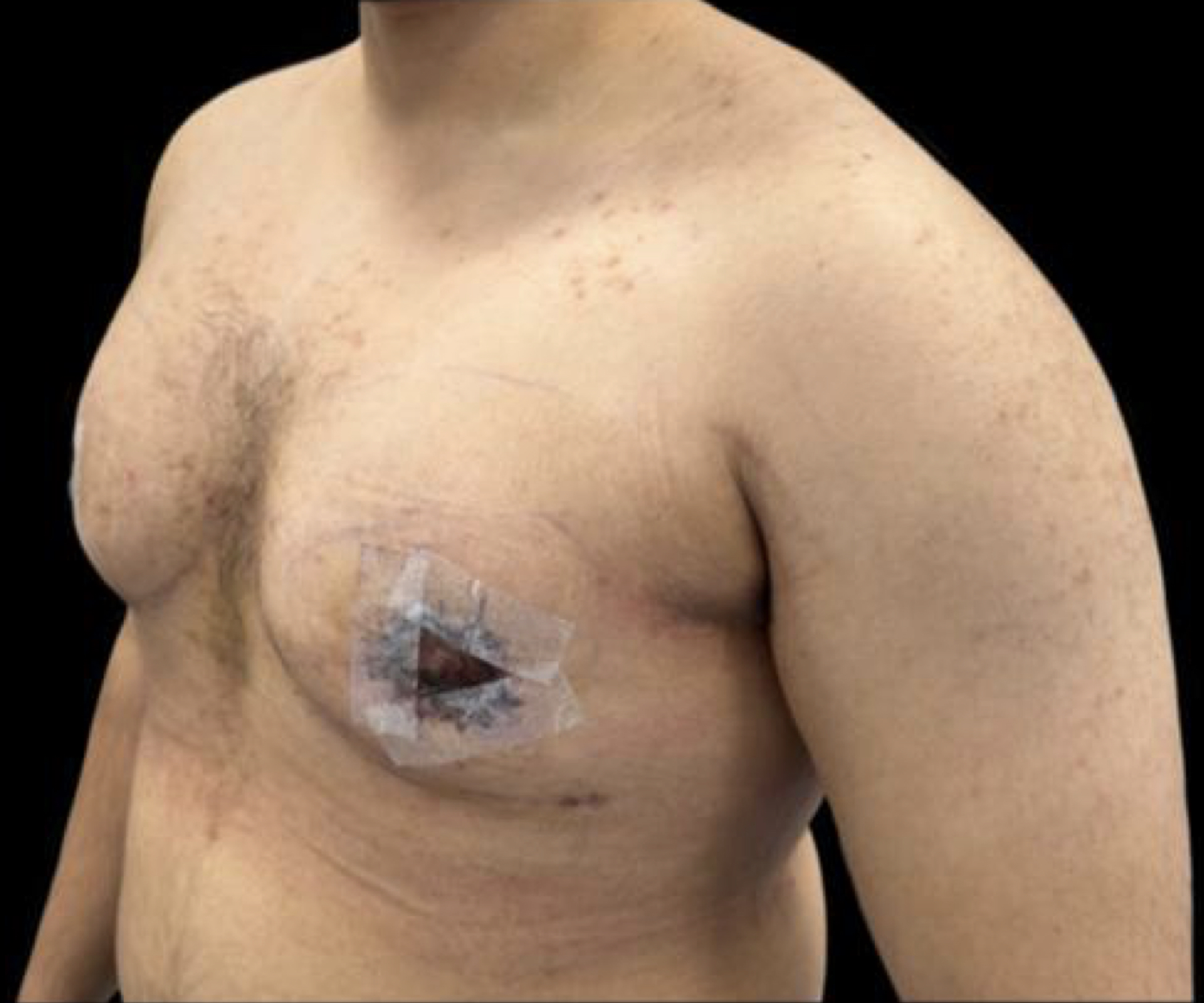SURGICAL PROCEDURE
Gynecomastia
Excision + Lipo
TREATMENT OVERVIEW
The surgical approach to treating this condition often involves a combination of excision and liposuction. These techniques aim to remove excess glandular tissue and fat, thereby restoring a more masculine chest contour and improving the patient’s quality of life.

THE PROCEDURE
The first step in addressing gynecomastia is a comprehensive consultation with a board-certified plastic surgeon who specialises in male breast reduction. During this meeting, the surgeon will conduct a thorough physical examination, which may include imaging studies like mammograms or ultrasounds, to determine the extent of the glandular tissue and fat deposits. This consultation serves as a platform for discussing your concerns, setting realistic expectations, and planning the surgical approach tailored to your unique needs.
The choice of anaesthesia is critical to the surgical plan and is tailored to your specific needs and medical history. Both local anaesthesia with sedation and general anaesthesia are options. A collaborative decision is made between you, the surgeon, and the anesthesiologist after a series of preoperative evaluations, including blood tests and cardiac assessments.
The surgery involves two main techniques—excision and liposuction. Excision is used to remove glandular tissue, while liposuction addresses excess fat. Incisions are strategically placed around the areola or within natural chest creases to minimise visible scarring. The incisions are closed with sutures once the excess tissue and fat are removed. Antibiotic ointments and sterile dressings are applied to minimise the risk of infection and aid in the healing process. The surgical team meticulously ensures that post-surgical marks are minimal and blend naturally with the skin.
AT A GLANCE
- Surgery: 90 Minutes
- Time off work: 10 Days
- Before you drive: 7 Days
- Return to Gym 3 Weeks
- Lift a small child: 3 Weeks
- Final Results: 3 - 6 Months
Actual return to activity times will be discussed and agreed with your Surgeon.
BEFORE & AFTER



THE BENEFITS
You may choose to undergo a Gynecomastia procedure for a number of reasons:

RISKS
THINGS TO AVOID
AFTER SURGERY
- Heavy lifting or strenuous exercise for 2-3 weeks
- Sleeping on your stomach initially
- Smoking and alcohol consumption
- Prolonged sun exposure to the surgical area
- Tight or constrictive clothing over the surgical area
- Spicy foods that may cause digestive issues
- Over-the-counter medications that can affect blood clotting, such as aspirin
- Swimming pools and hot tubs to avoid infection risks
Post Op
AFTERCARE
- Medication Regimen: Antibiotic ointments and anti-inflammatory medications are prescribed to prevent infection and manage pain.
- Environmental Precautions: Minimize sun exposure to prevent pigmentation changes in healing scars.
- Nutritional Guidelines: A balanced diet rich in essential nutrients like Vitamin C and zinc can expedite healing.
- Regular Follow-Up Visits: Essential for monitoring healing and addressing concerns. These visits may include imaging studies to assess the long-term results and effectiveness of the surgery.

